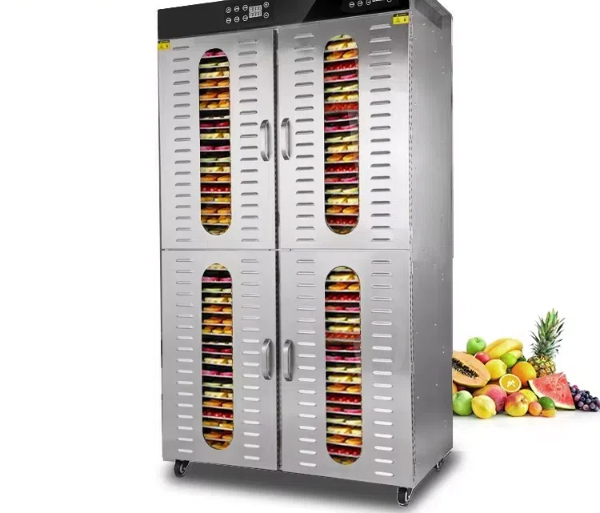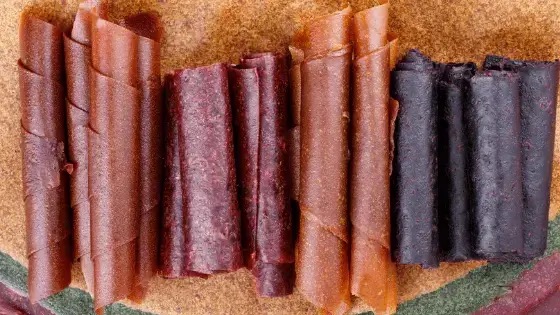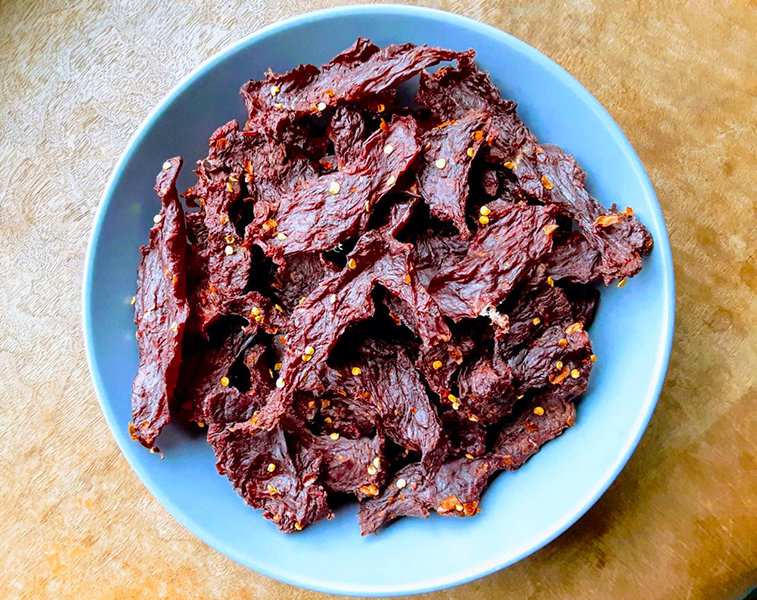
Content Menu
● 1. Introduction
● 2. Key Features of Hang-Type Dryers
● 3. Applications in Food Processing
>> 3.1 Noodles
>> 3.2 Meats
>> 3.3 Fish and Seafood
>> 3.4 Herbs and Spices
>> 3.5 Fruits and Vegetables
● 4. Advantages of Hang-Type Dryers
● 5. Innovations in Hang-Type Dryer Technology
● 6. Comparison with Traditional Drying Methods
● 7. Industry Case Studies
>> 7.1 Noodle Production Facility
>> 7.2 Meat Processing Plant
>> 7.3 Herbal Products Manufacturer
● 8. Future Trends in Hang-Type Dryers
● Conclusion
● FAQs
>> 1. What types of foods can be dried using hang-type dryers?
>> 2. How do hang-type dryers ensure uniform drying?
>> 3. Are hang-type dryers energy efficient?
>> 4. Can hang-type dryers be customized for different products?
>> 5. How does remote monitoring work in modern hang-type dryers?
● Citations:
Hang-type dryers have revolutionized the food processing industry by providing efficient and controlled drying solutions for various food products. This article explores the common applications of hang-type dryers, highlighting their benefits across different sectors.

1. Introduction
Hang-type dryers are specialized machines designed to dry food products by suspending them from hangers within a controlled environment. This method is particularly effective for items such as noodles, sausages, fish, and herbs, where even drying is crucial to prevent spoilage and maintain texture. Unlike traditional tray dryers, hang-type systems minimize contact points, reducing the risk of sticking or deformation.
2. Key Features of Hang-Type Dryers
1. Controlled Environment: Provides precise control over temperature, humidity, and airflow, essential for preserving food quality.
2. Energy Efficiency: Utilizes heat pump technology, saving up to 75% energy compared to traditional methods.
3. Versatility: Suitable for various food products including fruits, vegetables, and meats.
4. Automation and Smart Technology: Many modern hang-type dryers come equipped with automated features that allow for easy programming of drying cycles. This ensures that each batch can be dried according to its specific requirements without constant supervision.
5. Durability and Maintenance: Constructed from high-quality materials that withstand the rigors of continuous operation while requiring minimal maintenance.
3. Applications in Food Processing
Hang-type dryers are versatile and can be used for a variety of food products:
3.1 Noodles
The suspended arrangement prevents noodles from clumping together, ensuring uniform drying without compromising their shape or texture. This is particularly important for long noodles that are prone to sticking during traditional drying methods. Additionally, the controlled environment helps in retaining the nutritional value of the noodles while enhancing their shelf life.
3.2 Meats
These machines provide a controlled environment for curing and drying meats, preventing bacterial growth while enhancing flavor development. The precise temperature and humidity control allow for optimal enzymatic activity, leading to enhanced flavor profiles. Products such as jerky or cured sausages benefit significantly from this method as it helps in achieving the desired texture and taste without compromising safety.
3.3 Fish and Seafood
Gentle drying conditions help retain natural flavors and aromas that are often lost during high-temperature drying methods. The reduction in shrinkage and deformation maintains the product's market appeal. Fish products like dried cod or anchovies are popular in many cuisines worldwide, making hang-type dryers an essential tool for producers aiming to meet global demand.
3.4 Herbs and Spices
Low-temperature drying preserves essential oils and flavors, ensuring that the final product retains its aromatic properties. This makes hang-type dryers ideal for high-value herbs and spices such as basil, oregano, or saffron. The ability to dry herbs without losing their volatile compounds is crucial for maintaining their market value.
3.5 Fruits and Vegetables
From dried apple slices to sun-dried tomatoes, hang-type dryers provide a controlled environment for producing high-quality dried fruits and vegetables with minimal loss of nutrients and flavor. The gentle drying process prevents browning reactions in fruits while retaining vibrant colors that appeal to consumers.

4. Advantages of Hang-Type Dryers
1. Preservation of Food Quality: Maintaining food quality during the drying process is essential. Hang-type dryers allow precise control over temperature and humidity, minimizing damage to color, flavor, and nutritional content.
2. Modern Technology: Modern hang-type dryers feature intelligent digital controls that simplify operation. Users can program specific drying cycles tailored to different products.
3. Remote Monitoring: Allows users to monitor the drying process from anywhere, providing real-time data and control.
4. Reduced Labor Costs: Automation reduces the need for manual labor during the drying process, allowing staff to focus on other critical tasks within the production line.
5. Scalability: These systems can be scaled up or down based on production needs, making them suitable for small artisanal producers as well as large-scale manufacturers.
5. Innovations in Hang-Type Dryer Technology
Recent advancements in hang-type dryer technology have further enhanced their efficiency:
1. AI-Powered Control Systems: Automated optimization of drying parameters using AI algorithms ensures consistent quality across batches while reducing energy consumption.
2. Advanced Sensor Technology: More precise monitoring of temperature, humidity, and airflow contributes to improved product quality by enabling real-time adjustments during the drying process.
3. Integration with IoT: Remote monitoring and control through Internet of Things (IoT) devices enable manufacturers to optimize operations continuously based on data analytics.
4. Eco-Friendly Designs: Newer models focus on sustainability by using recyclable materials and reducing energy consumption further through innovative designs.
6. Comparison with Traditional Drying Methods
| Feature | Hang-Type Dryers | Traditional Dryers |
| Control Over Conditions | High (temperature/humidity) | Low (weather-dependent) |
| Energy Efficiency | High (up to 75% savings) | Low |
| Product Integrity | Maintains shape/texture | Risk of deformation |
| Versatility | High (various food types) | Limited |
| Labor Requirements | Low (automated processes) | High (manual monitoring) |
7. Industry Case Studies
7.1 Noodle Production Facility
A noodle production facility implemented a hang-type dryer system that increased their production capacity by 30%. By optimizing their drying cycles based on product type—such as rice noodles vs. egg noodles—they were able to reduce energy costs significantly while maintaining product quality.
7.2 Meat Processing Plant
A meat processing plant specializing in jerky products adopted a new hang-type dryer equipped with smart technology that allowed them to monitor moisture levels in real-time. This resulted in a 20% reduction in drying time while improving flavor retention due to better moisture management.
7.3 Herbal Products Manufacturer
A manufacturer focusing on organic herbs transitioned from traditional sun-drying methods to using hang-type dryers with low-temperature settings. This change not only improved product consistency but also expanded their market reach by ensuring compliance with international quality standards.
8. Future Trends in Hang-Type Dryers
The future of hang-type dryers looks promising with ongoing innovations aimed at enhancing efficiency:
1. Sustainable Practices: As consumers become more environmentally conscious, manufacturers are focusing on sustainability through energy-efficient designs and eco-friendly materials.
2. Customization Options: Increased demand for customized food products will drive innovations in dryer design allowing producers to tailor systems specifically for unique product requirements.
3. Enhanced Data Analytics: The integration of advanced data analytics will enable manufacturers to predict maintenance needs proactively and optimize production schedules based on real-time data insights.
Conclusion
Hang-type dryers represent a significant advancement in food processing technology. Their ability to provide efficient, uniform drying while preserving food quality makes them an invaluable tool for manufacturers worldwide. With energy-efficient designs and customizable features, these machines are poised to play a crucial role in the future of food processing as they adapt to meet evolving industry needs.

FAQs
1. What types of foods can be dried using hang-type dryers?
Hang-type dryers can be used for a variety of foods including noodles, meats, fish, herbs, fruits, and vegetables.
2. How do hang-type dryers ensure uniform drying?
The suspended arrangement allows maximum surface area exposure to airflow while maintaining controlled temperature and humidity levels.
3. Are hang-type dryers energy efficient?
Yes, they utilize heat pump technology that can save up to 75% energy compared to traditional methods.
4. Can hang-type dryers be customized for different products?
Manufacturers offer various customization options including modifications to hanger design and chamber size adjustments tailored specifically for different food types.
5. How does remote monitoring work in modern hang-type dryers?
Remote monitoring allows users to track the drying process in real-time through IoT devices or apps on smartphones or computers, enhancing operational efficiency by enabling timely adjustments when necessary.
Citations:
[1] https://www.dryeratech.com/hang-type-dryers-the-secret-to-perfectly-dried-products.html
[2] https://patents.google.com/patent/CN110207480A/zh
[3] https://www.dryeratech.com/innovations-in-hang-type-dryer-technology-you-should-know-about.html
[4] https://patents.google.com/patent/CN1405396A/zh
[5] https://gcwgandhinagar.com/econtent/document/1588156026Unit%20V%20Types%20of%20dryers%20and%20their%20applications.pdf
[6] https://patents.google.com/patent/CN109252340A/zh
[7] https://ebooks.inflibnet.ac.in/ftp02/chapter/dryers-used-in-food-industry/
[8] https://patents.google.com/patent/WO2022068971A1/zh











